

A bone marrow transplant, also known as stem cell transplant, and more specifically it is known as hematopoietic stem cell transplant, is a procedure in which the bone marrow of a patient is replaced by healthy cells known as stem cells. Stem cells are the cells that can transform themselves into many different types of cells in the body. A stem cell transplant is provided to the patient whose bone marrow is damaged or destroyed due to the presence of a bone marrow blood disorder or certain illness in the body that affects the bone marrow and the bone marrow stem cells. Bone marrow is a spongy tissue that is present in the center of the bones, especially the bones of the hips and thighs. There are some immature cells present in the bone marrow that produce the blood cells such as red blood cells, white blood cells, and platelets. These immature cells are the stem cells.
The demand for stem cells is increasing worldwide due to the increased number of patients who need a stem cell transplantation procedure. Similarly, in African countries, the number of patients in need of stem cell transplantation is increasing every year but they are facing a major problem as they don’t have enough stem cell donors. The reason for the shortage of donors is because of lack of awareness and misunderstandings about the concept of donation and stem cell therapy. Because of this reason, it is very difficult to find the right match for the bone morrow transplant procedure and many patients have to keep waiting for the right match donor.
Many people from African countries like Kenya, Cameroon, Uganda, and Rwanda visit India every year for the treatment of bone marrow blood disease. Indian BMT hospitals have the most modern infrastructure and world-class facilities in addition to the latest medical technologies and innovative treatment approaches. The medical teams in Indian hospitals are well versed in different medical conditions and the best approach that can treat the diseases. Although the quality of Blood Marrow Transplant Procedure in India is premium, the cost of the treatments and medical care remains low which is much affordable to African patients.

Stem cell transplant is the choice of treatment for patients whose bone marrow is no longer healthy enough to function efficiently due to the damage caused by chronic diseases, infections, or cancer treatments. The most common causes of bone marrow damage are listed below.

There are two major types of a bone/blood marrow transplant. Each type would depend on the situation of the patient's need for the transplant.
Autologous bone marrow transplant is the transplantation of a patient’s own stem cells. Sometimes what happens is, that if a patient is suffering from cancer, then the doctor retrieves the patient’s stem cells and preserves them before starting a chemotherapy or radiation therapy treatment. This is because chemotherapy and radiation therapy can permanently damage the bone marrow stem cells. After the cancer treatment is completed, the stem cells are transplanted into the patient.
It is also known as ALLO transplant. It is the transplantation of another person’s stem cells or a donor’s stem cells into the patient. In order to perform an allogenic blood marrow transplant, finding a suitable donor who matches the patient is a necessary first step. A perfect match is a person whose blood protein known as HLA-human leukocyte antigens closely matches the patient’s HLA.
Apart from these two, some other types of transplants are umbilical cord blood transplants and parent-child transplants/haplotype mismatched transplants.
To be a stem cell donor for a patient in need of a stem cell transplant, you must make the right match for the patient. Whether you are a right match or not, is determined by a test known as the HLA test (human leukocyte antigen tissue test). In addition to this, people who are under the age of 18 to 60 can donate stem cells, however, it is best if the donor is between 18 to 45 years of age as it can increase the success rate of the procedure. There are certain genes that are responsible for how our immune system behaves, these genes can be different among the different races and ethnicities of people because of which it is highly profitable if the donor belongs to the same race and ethnicity as the recipient/patient. Besides this, a donor must be healthy and free from diseases and illnesses in the body. A bone marrow transplant donor must be ready to take some tests such as blood tests, disease tests, etc. before donating the stem cells.
Bone marrow transplant procedure is a treatment process in which several steps are involved. From finding the right donor to making sure that the newly infused stem cells have established themselves in the patient’s body and have started producing healthy blood cells, the procedure involves 6 steps which are mentioned below.

A patient will have to undergo medical tests to make sure that he/she is strong enough to have this bone marrow transplant procedure. A patient will be asked to consume some antifungal, antibiotic, and antiviral medications as preventative measures.
A donor should match the recipient and in order to know whether the individual is a right match or not, he/she will have to indulge in some blood tests and disease tests.
Once the right match (donor) is found, it is time to harvest the stem cells and preserve them. In some cases, the stem cells of the patient are harvested before treatments like chemotherapy and radiation therapy to transfuse these stem cells back into the patient after the treatment.
The patient will then undergo blood marrow transplant treatments like chemotherapy, radiation therapy, or any other treatment that is required for the bone marrow blood disorder. This is to make sure that the bone marrow is disease-free before transfusing the stem cells.
During the bone marrow transplant procedure, the healthy stem cells that were preserved previously are delivered into the patient’s bloodstream through an intravenous infusion. Once the stem cells are delivered, they travel in the bloodstream and reach the bone marrow that is present in the cavities of large bones of the body.
After the stem cells are delivered, they will establish themselves in the bone marrow which is known as engrafting. Once they are engrafted, they start regenerating the healthy blood cells and the immune cells.
The newly introduced stem cells will make their way to the bone marrow and start producing healthy and new blood cells, this process is known as engraftment. The stem cells can take a long time to produce enough blood cells to reach an optimum blood count. Hence, a patient will need to visit the hospital frequently to check the blood count which will help to determine the rate at which the stem cells are able to produce the blood cells. Your doctor will give you follow-up appointments to monitor your overall health and blood count. You must stay away from being in a public setting initially to prevent catching any infections. Your doctor will recommend some medicines and advise you to consume plenty of fluids and a proper diet in order to provide nutrition to your body. You should do some light exercises to rebuild our strength and also to keep your blood circulating. Once the blood count stabilizes, the frequency of follow-up appointments will reduce. It will take about 6 to 18 months for the blood count to be optimal after the bone marrow transplant for Leukemia procedure.

Dr. Pawan Kumar Singh is the top bone marrow/stem cell transplant surgeon in India. He has performed more than 300 cases of bone marrow/stem cell transplants for both malignant and non-malignant blood disorders.
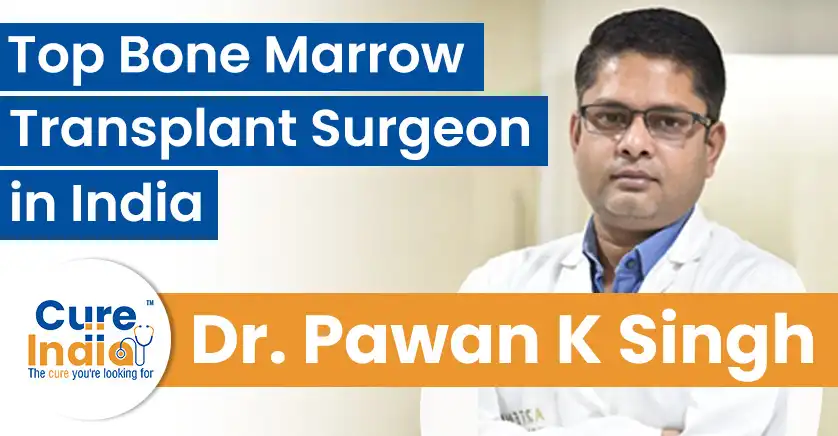
Dr. Dharma Chaudhary is the leading bone marrow/stem cell transplant specialist and haematologist. He with his team had conducted over 850 cases of allogeneic bone marrow/stem cell transplant.
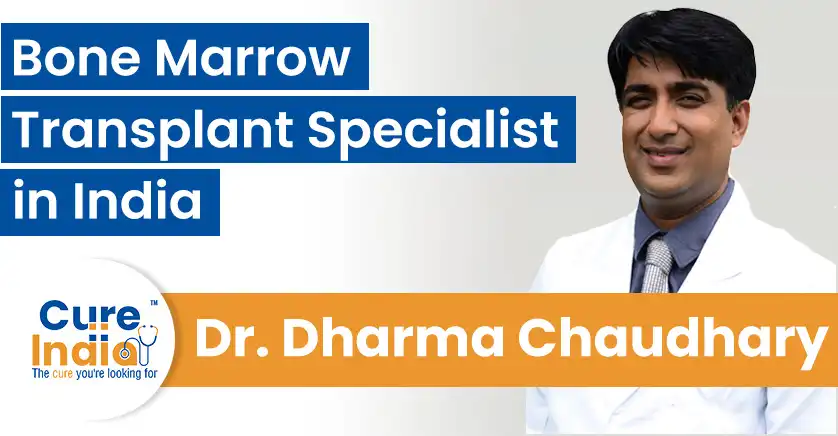
Dr. Shishir Seth s a renowned bone marrow/stem cell transplant surgeon in India. He is efficient in the treatment of leukaemia, lymphoma, and other blood cancers and blood-related ailments.
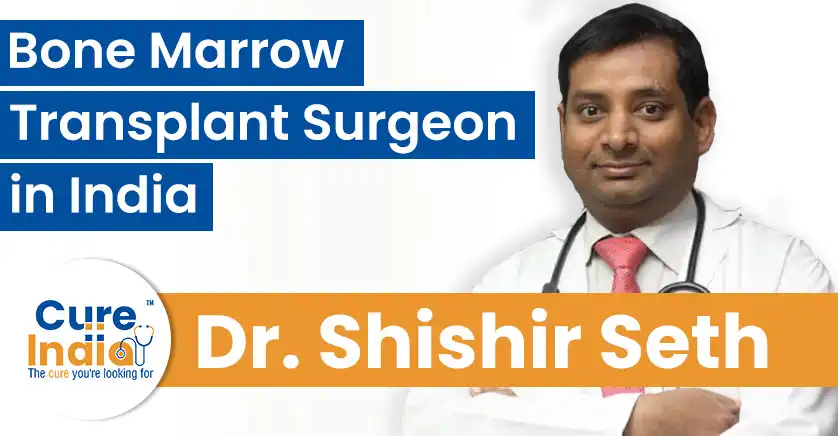
Every year, many Africans from countries like Cameroon, Ethiopia, and Nigeria travel to India for bone marrow transplant procedure. With regularly upgrading healthcare services, the cost of bone marrow transplant in India is low, which benefits global patients. The medical care provided to patients in India is top-notch, and the patients receive complete support and guidance. Hospitals in India have the latest facilities and highly educated staff. India provides allogenetic and autologous bone marrow transplants and a novel approach like mRNA editing for bone marrow transplants. The cost of visiting and receiving medical treatment in India is much lower than in many other countries. Mentioned below is the cost of Bone Marrow Transplant in India:
| Treatment | Cost in India | Stay in India |
|---|---|---|
| Matched Donor Blood Marrow Transplant Procedure in India | $22,000 - $26,000 | 2 Months |
| Half Matched or Haplo Identical Blood Marrow Transplant Procedure in India | $26,000 - $30,000 | 2 Months |
| Unmatched Donor Blood Marrow Transplant Procedure in India | $28,000 - $80,000 | 2 Months |
India has numerous options for bone marrow transplant procedure where the hospital standards and facilities are premium and at par with any other global medical and health institutes. Here are some of the many hospitals which serve top-notch bone marrow transplant surgery. They are not only cost-effective but also have some of the best doctors dealing in transplant surgeries on board. BLK Super Speciality Hospital is the biggest bone marrow transplant centre in Asia.
Bone marrow transplant or a stem cell transplant is a lengthy procedure because the procedure cannot be started until the right donor is found. The procedure also involves undergoing blood and disease tests before donating and receiving the stem cells. In many countries, the stem cell transplant procedure is available, but not a lot of transplants take place. India has now become a medical hub because almost all types of transplant treatments and surgeries are available here, be it kidney transplant or liver transplant. Indian hospitals are well equipped with modern and effective medical technologies and infrastructure which aids in successful treatment procedures. The healthcare system in India has highly experienced doctors and surgeons who provide high-quality treatment to their patients. Because of these reasons, most international patients choose India for their medical treatments.

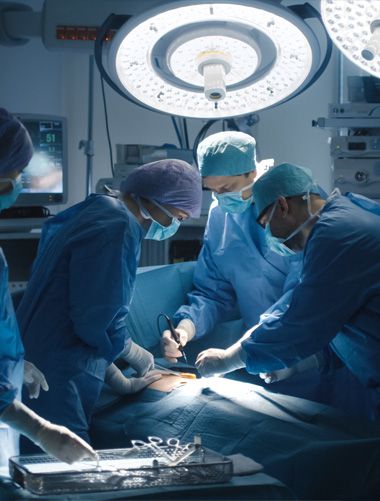
Successful Liver Transplant Surgery in India
Share Your Reports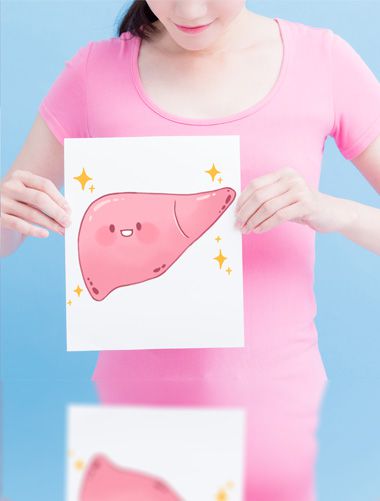
Minimally invasive Liver donor surgery
Book appointment